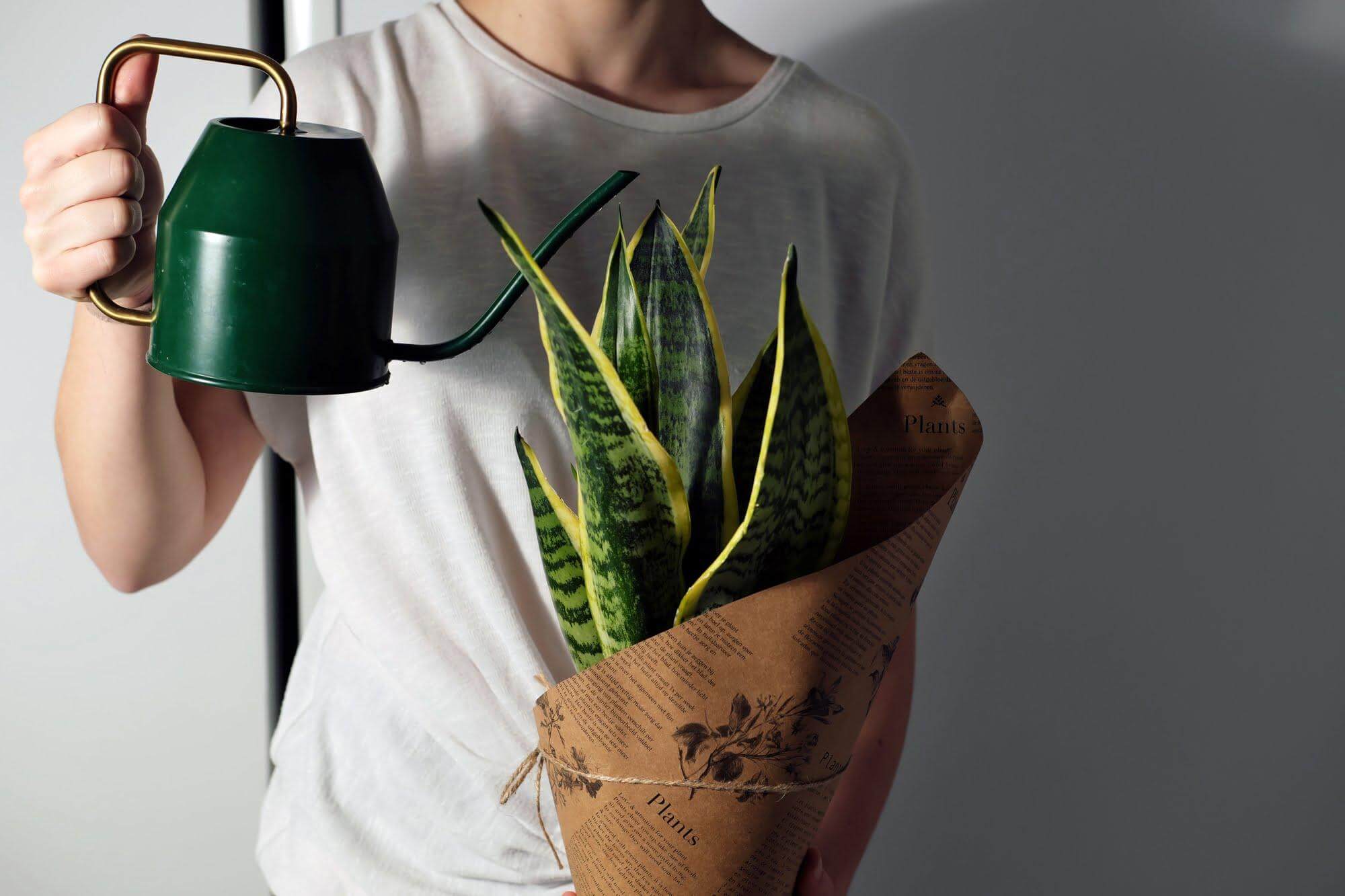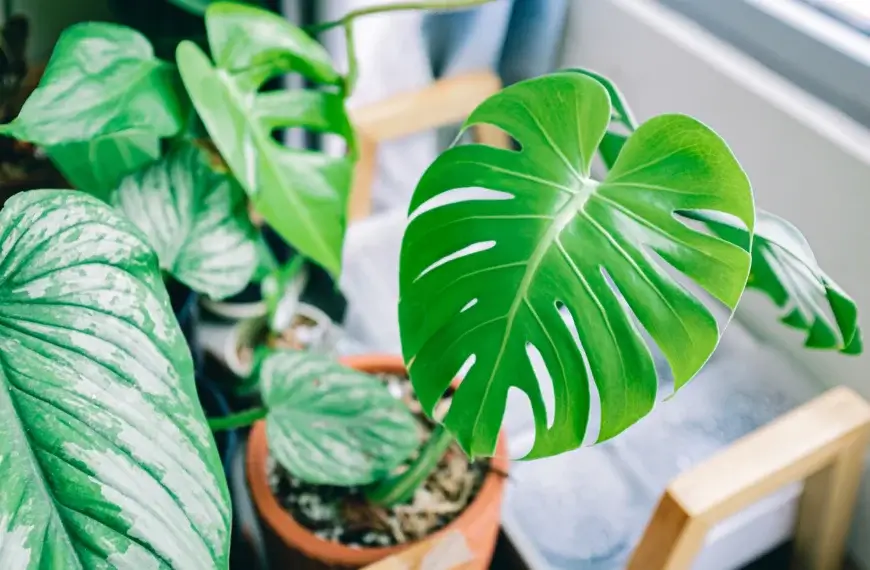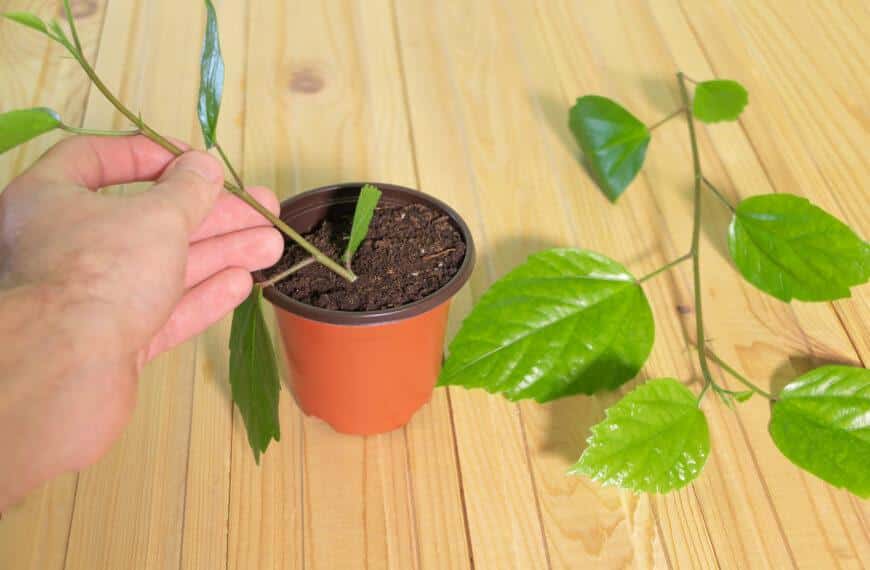Watering Indoor Plants
Indoor plant care is essential for maintaining the beauty and vitality of your indoor garden, and watering plays a crucial role in achieving optimal plant health. In this article, “Plant Care: Watering, Pruning, and Fertilizing for Optimal Plant Health,” we’ll dive into the art of watering your indoor plants. The section “Watering Indoor Plants” will examine the best time to water and the various watering techniques you can employ. We’ll also discuss the importance of watering, as well as how to recognize the signs of overwatering or underwatering, ensuring that your indoor plants thrive and flourish in their environment.
Importance of Watering
Watering indoor plants is essential for their health. Hydration helps absorb nutrients and keeps the roots strong. It also aids in controlling pests, disease, soil compaction, and photosynthesis.
Check moisture levels by placing a finger, or soil moisture meter, into the top inch of soil.
Avoid evaporating water. Water plants in the cooler morning or evening. Use room temperature water to keep them consistent. Use appropriate containers that drain excess water, preventing root rot and fungal growth.
Signs of Overwatering/Underwatering
Plants can suffer when they are given too much water or too little. Signs of overwatering include yellowing leaves, root rot, and a bad smell. Underwatering can result in dry and brittle leaves and wilting. To determine if the plant needs more water, check the soil moisture levels. Oftentimes, underwatering is worse than overwatering.
It is important to research what each plant needs to be healthy in your home. Remember: when it comes to watering indoor plants, timing is essential. Not too early, not too late!
Best Time to Water
Time it right when watering indoor plants! Here are some tips:
- Check soil moisture level by poking a finger into the soil up to the first knuckle. If it’s dry, water the plant.
- Water in the mornings, before the sun is blazing.
- In summer increase watering frequency to prevent dryness.
- During winter water less regularly as air is drier.
- Avoid evening watering, as it creates a breeding ground for mold.
- Frequency can vary depending on the plant, climate and size of container it’s in.
Pro Tip: Fertilizers provide nutrients for healthy growth. Get advice from a nursery about the right amount of fertilizers for your plants, as well as a suitable fertilizing schedule and technique. Remember, watering indoor plants is like performing surgery with a watering can!
Watering Techniques
Indoor Plant Watering Techniques: To keep your plants hydrated and thriving, pay attention to these tips.
- Check Moisture Level: Insert your finger into the soil. If it’s dry, time to water your plant, or try this tool.
- Water Steadily: Use a watering can or pitcher with a narrow spout. Water slowly at the base of the plant until you see water draining.
- Avoid Overwatering: Too much water can cause root rot, fungus and pests.
Group your plants together according to their needs for light and water. Clay pots help prevent root rot but need more frequent watering than plastic pots. Trim your plants to give them a ‘haircut’. They’ll thank you later!
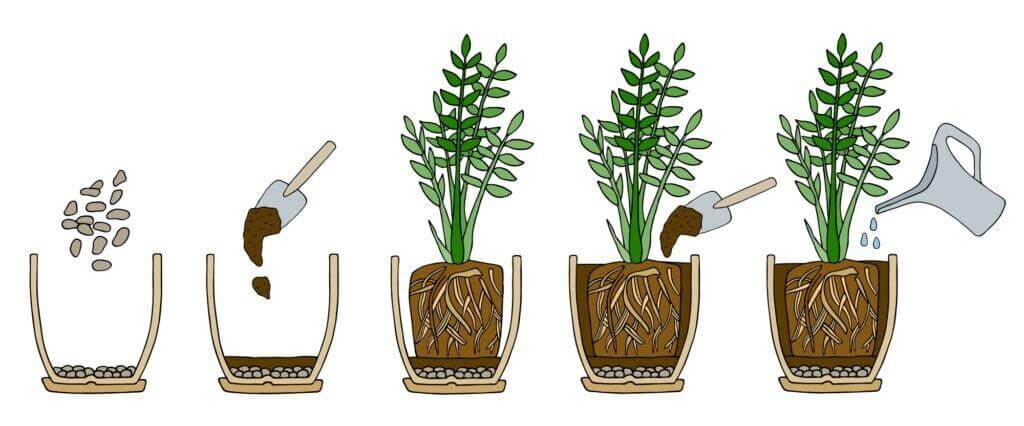
Pruning Indoor Plants
To ensure the optimal health of your indoor plants, pruning is essential. This section on pruning indoor plants with its sub-sections – Importance of Pruning, Tools Required, Types of Pruning, and When to Prune – will equip you with all the required knowledge to help your indoor greenery thrive.
Importance of Pruning
Pruning is vital for indoor plant growth. Cut off dead, yellowed or diseased leaves to improve visual appeal, prevent disease and promote healthy growth. You can create a beautiful green sculpture to transform the interior atmosphere. It also permits better air circulation and more light penetration to the foliage.
To prune plants indoors, you must use clean, sharp tools. Make vertical cuts at the base of each stem to generate new shoots and increase foliage density. Pruning is necessary to keep plant size manageable and to shape them. Regularly check and trim long branches or stems. This will stop overcrowding and reduce environmental stress on the plants.
Winter months bring a lack of sunlight indoors. Photosynthesis becomes difficult with crowded vegetation. Prune to make sure all parts of the plant get enough rays from the winter sun. This compensates for low light in colder climates.
A Horticulturist once mentioned how she used pragmatic methods to nurture her greenhouse roses. It was surprising when they shot up beyond five feet! With regular pruning using clean shears, and exclusively for irrigation purposes, there was an impressive crop turnaround on the changing seasons without damaging any plants. Each pinch-cut provoked them into blooming again within days! If you want to prune your indoor plants, all you need are a sharp pair of scissors and a not-so-sharp wit.
Tools Required
When pruning indoor plants, certain tools are needed for a successful process. These tools depend on the type and size of the plant.
Essential tools include:
Pruning shears cut small stems and branches. Hand pruners are perfect for thicker branches. Loppers are great for larger ones. Saws are used for thick parts. Gloves protect hands from harm.
Before using the tools, sterilize them to avoid infections in the plant. Keeping them sharp also helps for quicker healing.
When buying tools, consider their quality. High-end ones use less effort, last longer and are more efficient than cheaper options.
With the correct use of these tools, your plant can grow healthily.
History tells us that pruning has been around since ancient times. The Romans used selective cutting to maintain gardens in their homes or public spaces. Pruning indoor plants is like giving them a nice haircut – you must know the right cuts to make them look good.
Types of Pruning
Shape up your indoor plants! Pruning is the key. You can categorize it by purpose: shaping, maintenance, size reduction, growth promotion. Examples are topiary trimming, deadheading, pinching back and root pruning. Research the needs of your species before pruning.
Unlock new possibilities for beautifying your living space with greenery – just like in ancient Roman topiaries and European Renaissance gardens. Prune away for an artful look!
When to Prune
Indoor plants need pruning to stay healthy and grow optimally. The right time for it depends on the plant species, its current condition, and growth stage.
- Prune in spring to get new growth.
- Cut leggy stems for a fuller look.
- Remove dead or sick leaves all year.
- Pinch off tips for bushier growth.
- Don’t prune too much during dormant periods – it can damage the plant.
Watch your plants often for overgrowth or wilting. Pruning at the right time, like with flowering plants, can help blooming. But, trimming too much of healthy foliage can hurt its looks and health.
Take an example of a rubber plant – it started wilting due to dead leaves covering its stem. After pruning, the plant got its old shape and shine back in weeks. So, be thoughtful when deciding to prune your indoor plants! Show them some love and nutrients, but don’t go overboard or they’ll act like your clingiest ex.
Fertilizing Indoor Plants
To ensure that your indoor plants remain healthy and vibrant, it is necessary to fertilize them regularly. In this segment on fertilizing indoor plants, you will learn about the importance of fertilizing and the different types of fertilizers available. You will also discover the best practices for applying fertilizer to your plants and the techniques for maximizing their growth potential.
Importance of Fertilizing
Most indoor plants need fertilizing to flourish. It is vital for optimal growth and health, considering the limited soil and natural light indoors. Here are four reasons why:
- Plants grown in soilless mixes need extra nutrients, which traditional soil provides.
- Fertilizer supplies nitrogen, phosphorus, potassium, and other minerals for growth.
- Regular fertilizing helps keep a stable pH level, leading to healthy roots and foliage.
- Minerals strengthen the plant’s tolerance to environmental changes, diseases, and pests.
Indoor plant care needs more than water and light. Neglecting to feed them can cause yellowish leaves due to insufficient nitrogen. Thus, it is important to pay attention to each species’ fertilizing requirements.
NASA conducted research on houseplants during the late 1980s to early 1990s, to be grown within closed chambers. The results showed that houseplants help regulate air quality, by absorbing toxins such as benzene, xylene, chloroform, trichloroethylene, and formaldehyde. The study also revealed organic materials to be more efficient than synthetic chemical fertilizers.
To ensure proper fertilizing, individuals should seek species-specific advice. This will ensure good growth and health, while avoiding over or under-fertilization. A little neglect never hurt anyone, but better fertilizers make for happier plants.
Types of Fertilizers
For good indoor plant growth, knowing the different types of fertilizer is key! Options range from organic, synthetic, liquid, and slow-release. Each one provides a different nutrient level. Check out the table below for more info.
| Type | Description | Recommendation |
|---|---|---|
| Organic | Made from natural stuff like compost or manure. Nutrients slowly released into soil. | Burpee Natural Purpose Organic Fertilizer |
| Synthetic | Man-made and dissolves quickly in water. Nutrients are quickly absorbed by plants. | Roots Organics Synthetic Grow Fertilizer |
| Liquid | Sprayed on leaves or applied directly to soil. Can be organic or synthetic. | FoxFarm Liquid Nutrient Trio Soil Formula |
| Slow-Release | Nutrients released over a long period. Contains both synthetic and organic. | Schultz All Purpose Slow-Release Plant Food |
Note: Different fertilizers are suitable for different plants. Read the label before using them. Over-fertilizing can harm plants and cause stunted growth or even death.
Pro Tip: Water your plants before applying fertilizer. Don’t fertilize newly potted plants until they’re established. Get your green thumb ready and apply fertilizer with these easy steps to keep away the ghost of withered plants past!
How to Apply Fertilizer
Indoor plant care is essential for optimal growth and health. Follow these five steps for successful fertilization:
- Choose a high-quality fertilizer with balanced nutrients
- Dilute the fertilizer to half-strength per label directions
- Apply the diluted mixture around the roots in a circular motion
- Fertilize every four weeks only
- Clean off any excess residue on leaves and soil
Over-fertilizing leads to unhealthy growth. Different plants require different nutrient levels, so research beforehand. Yellowing leaves often mean over-fertilization. In such cases, flush out excess nutrients by watering thoroughly three times.
Remember – too much of a good thing can be detrimental. Be mindful of your indoor plants ‘needs and give only what they require. Fertilize like a pro with these Best Practices and watch your plants grow into big, beautiful and oxygenated stress-relievers!
Best Practices for Fertilizing
Ways to Increase Indoor Plant Growth
Indoor plants need proper care to grow. Fertilizing them is one way to help. It gives them the nutrients for growth.
- When – Fertilize during their active growing season, when they can take in the nutrients.
- How – Follow the directions, using half-strength fertilizer every two weeks.
- Soil – Get high-quality potting soil with vermiculite or perlite. This helps with drainage and air.
Organic fertilizers are better. Compost or fish emulsion give natural nutrients and help the soil.
Be careful not to over-fertilize! Too much can lead to salt buildup in the soil. This is bad for plants. Don’t want your plants to become as strong as the Hulk? Don’t over-fertilize!
Common Mistakes to Avoid
To avoid common mistakes in indoor plant care, such as overwatering, underwatering, over-fertilizing, and lack of proper lighting, you need to follow specific guidelines. By knowing how to navigate these common mistakes, you can lead your plants to optimal health. Let’s delve into the sub-sections of watering, pruning, and fertilizing in order to troubleshoot these issues and help maintain your plants’ longevity.
Overwatering
Gardeners must be careful not to overwater; it can cause root rot and plant death. Too much water also washes away vital nutrients from the soil. Plants need to be watered at the right time, too – hot weather or when the sun is at its peak can cause the water to evaporate before reaching the roots.
Gardening can be a rewarding experience, but it requires knowledge of each plant species’ hydration needs. Getting these conditions just right is essential for healthy growth, bountiful harvests, and gorgeous flowers. Failure to do so might lead to disastrous results – something no gardener wants!
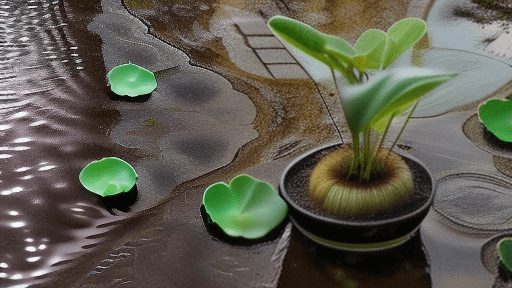
Underwatering
Inadequate watering is a major error that harms plant growth. Without water, plants droop and eventually die. Hydration is essential for plants to prosper and without enough, they lack the nutrients they need to photosynthesize.
Roots will have difficulty absorbing nutrients, resulting in undersized growth, yellow leaves and root harm. A continual dry period can cause permanent damage or kill the plant. People often forget to water their houseplants or don’t water them enough.
Plant owners should look into their plants’ species, age, size and location to find out how much water they need. Humidity and air temperature also influence the amount of water plants require.
For centuries, people have been aware of plants’ demand for adequate hydration. Ancient Greeks would pour wine or olive oil into potted plants before hosting guests from those pots. It was thought this expressed respect for nature and provided extra hydration for the plants.
So be careful: too much water is just as bad for your plants as not enough.
Over-Fertilizing
Nutrient Overload can occur when plants can’t absorb the excessive fertilizer. It can cause root burn and salt accumulation, leading to the death of the plant.
Fertilizers are necessary for growth, but must be used correctly. Gardeners often add too much to speed up the process. Low-quality fertilizers can also contribute to this issue.
To prevent over-fertilizing, test soil pH regularly and read labels carefully. Natural fertilizers, like compost or manure, are a good choice – they don’t harm the environment or humans.
Pro Tip: Use a soil testing kit from gardening stores. This way, you know exactly how much your garden needs, instead of guessing and risking over-fertilizing.
Lack of Proper Lighting
Correct Illumination is Essential
Getting the right lighting is super important, especially for interior spaces. Poor lighting can ruin the entire look of a room. Good illumination creates a comfortable and inviting atmosphere, while inadequate light can cause tension and discomfort.
Proper Lighting is Crucial
At work or when having fun, proper lighting is important for efficient functioning and good health. Dimly lit areas can lead to drowsiness, lowered productivity, eye strain, and headaches. It can also make residential and commercial places look unpleasant.
Reduce Health Hazards from Inadequate Lighting
In the past, poor office lighting has been connected to many health issues, such as headaches, neck pain, burnout, and Seasonal Affective Disorder (SAD). Adequate lighting helps reduce these problems by boosting mood and energy levels which increases concentration and productivity.
A Look Back
For centuries, humans have used light to shape our surroundings. We’ve used candles after dark and then powered lamps with synthetic gasses. Nowadays, there are lots of styles and models available for home and business use that make light both stylish and effective, helping people in their everyday lives.
Troubleshooting Indoor Plants
To troubleshoot your indoor plants effectively, learn to identify and treat plant problems in a timely manner. In this segment, we will discuss common plant diseases, pests, and insects that can harm your plants’ health. By introducing the sub-sections of how to identify and treat these problems, you can prevent further damage and promote healthy plant growth.
Common Plant Diseases
Your indoor plants can suffer from more than you may think! Keep an eye out for:
- Discoloration, wilting or rotting due to light and water intake variability.
- Spider mites and mealybugs damaging leaves and creating webs.
- Bacterial and fungal infections from watering from above, like spots, sunken areas or disfigurement.
For prevention, control humidity levels and temperature. Plus, research suggests applying small amounts of cinnamon or chamomile extract to soil could act as a natural antifungal agent. So, if bugs are eating up your plants, get help before it’s too late!
Pests and Insects
Indoor Greenery Intrusions!
Tiny intruders can turn your jungle into a battleground. Pest and insect infestations often plague indoor plants. No one wants to share their greens with them.
Houseplants make our homes look and feel better. Unfortunately, many indoor species are prone to insect infestation. Spider mites, fungus gnats, whiteflies, scale insects, and mealybugs are some of the common culprits.
Soap solutions and organic sprays like neem oil can fight off the little crawlers on leaves, stems, and crevices. Organic pellets containing nematodes could help combat tiny worms in soil.
Do not let any creepy crawly take over your greenery. Monitor your plants often. Look out for early signs of pests. Address them right away!
Diagnose plant health issues as if you are a detective! You don’t need a magnifying glass or a trench coat to solve the case.
How to Identify and Treat Plant Problems
Solutions to Aid Indoor Plant Issues!
Observe your plants often. Spot signs of distress like yellowing, curling or the presence of spots. Figure out the cause. It could be too much or not enough watering, nourishment, pests, or diseases. Make adjustments. Prune, adjust the light and temp, and use pesticides if needed. Maintain a healthy environment. Provide proper water and light exposure. Research the specific needs of each plant.
As an example, my friend had browning spider leaves. After inspecting, we found the root system was root-bound. We replanted it in a bigger pot with fresh soil. Within a week, the brown leaves turned green again. This highlighted the importance of transplanting indoor plants every few years.
To keep plants healthy, it takes love, care, and patience for a few quirks.
Conclusion and Final Tips for Healthy Indoor Plants
Achieve Optimal Indoor Plant Health: Guidelines to Follow!
Water, prune and fertilize your indoor plants regularly. Don’t under or over water them; this could damage the plant. Also, keep the environment clean.
Provide Adequate Sunlight and Control the Humidity
As well as the water, prunings, and fertilizers, make sure that your indoor plants get enough sunlight. Put them in an area where they will get the right amount specific to their needs. Controlling humidity levels will help them last longer.
Simple Indoor Plant Hacks which Work
To promote healthy plants, upkeep is necessary. Use banana peels for organic fertilizer – they contain high potassium. Sprinkle a thin layer of coffee grounds on soil for extra nitrogen. Spray rubbing alcohol on infested leaves to remove spider mites, without harming the leaves.
Remove dead leaves and cut damaged parts to stimulate growth and give a neat look. But don’t overdo it! Follow pruning techniques specific to each plant species. Healthy indoor plants bring joy to our living spaces – try these tips today!
Frequently Asked Questions
Q: How much water should I give my indoor plants?
A: The amount of water your indoor plants need depends on several factors, including the type of plant, the soil type and size of the container. As a general rule of thumb, water your plants when the top inch of soil is dry to the touch.
Q: How often should I fertilize my indoor plants?
A: The frequency of fertilization depends on the type of plant and the type of fertilizer you are using. Generally, indoor plants need to be fertilized every 2-4 weeks during the growing season (spring and summer) and every 4-6 weeks during the dormant season (fall and winter).
Q: When should I prune my indoor plants?
A: Pruning can be done anytime, but it’s best to do it in the spring before new growth appears. Prune away any old, dead or diseased growth, and any growth that is crowding other branches. You can also pinch back new growth to encourage bushiness.
Q: Can I use tap water to water my indoor plants?
A: Tap water is generally safe to use for watering indoor plants, but avoid using water that is too cold or hot. If you have hard water (water with a high mineral content), consider using filtered or distilled water to avoid mineral buildup in the soil.
Q: Is it possible to overwater indoor plants?
A: Yes, overwatering can be just as damaging or even more damaging than not watering enough. It can lead to root rot, fungal diseases and other problems. Always check the soil moisture level before watering and allow the soil to dry out between waterings.
Q: Why do the leaves on my indoor plants turn yellow?
A: Yellowing leaves can be a sign of various problems, including overwatering, underwatering, inadequate light or nutrient deficiencies. Check the soil moisture level, adjust your watering schedule, ensure adequate light and fertilize if necessary.

